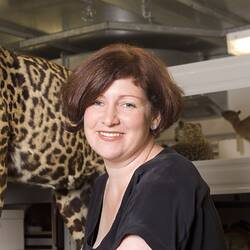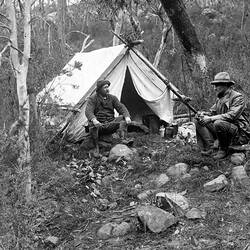Scientific Art & Observation
The Scientific Art & Observation Collection was established in the mid-twentieth century with the consolidation of material from the Museums Victoria archive, library and various collection areas. It now includes commissioned, purchased and donated works from the earliest days of Museums Victoria to today. Many of the subjects are specimens in other parts of the Museum's collections. The artworks in the collection include original pencil, ink, oils, gouache and watercolour works on paper, produced both in laboratory conditions and in the field. The collection features examples of traditional printing techniques such as engravings, lithography and traditional Japanese Gyotaku. It also includes photographic formats including glass lantern slides, black-and-white and hand-coloured prints, and 35 mm slides, right through to digital techniques such as imaging.
Significance
The Scientific Art & Observation Collection includes historically and scientifically significant material documenting the natural history of Victoria from the middle of the nineteenth century. The collection also documents changes in scientific observation and publication from illustration and photographic practices through to printing techniques and digital processes.
The collection contains works from some of the nineteenth and twentieth century's most significant natural history art and artists, including John Gould and John-James Audubon. However its great strength lay in the fiercely local studies produced from the work of the Museums Scientific staff. Perhaps the best example of this is the material commissioned by The Museum's first director, Frederick McCoy, for both the Prodromus of Palaeontology and Zoology, one of the earliest attempts to comprehensively document Victoria's natural history.




